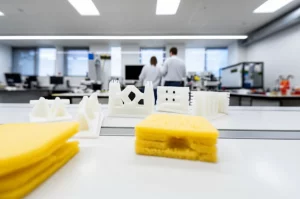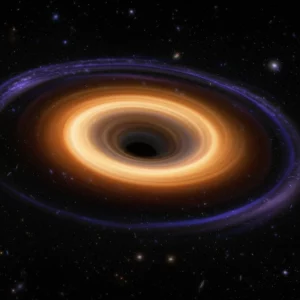Unlocking Smoothness: How Math Reveals Hidden Regularity in Fokker–Planck Solutions
So, picture this: we’re diving into the fascinating world where random movements meet predictable patterns. This is often where stochastic differential equations (SDEs) and partial differential equations (PDEs) shake hands, and the go-between is usually something called a Fokker–Planck equation.
Think of it like tracking a cloud of particles. The SDE describes how each tiny particle jitters around randomly, influenced by forces and diffusion. The Fokker–Planck equation, on the other hand, describes how the *density* of that whole cloud evolves over time. It tells you the probability of finding a particle in a certain spot.
Now, sometimes, we’re not interested in the cloud changing over time, but what it looks like when it settles down – its stationary state. This gives us the stationary Fokker–Planck equation. Solutions to this equation often represent invariant measures, which are super important. Why? Because they give us a deterministic way to understand the long-term behavior of those random systems. They pop up in cool places like Markov Chain Monte Carlo (MCMC) methods, used for sampling complex probability distributions, and even in cutting-edge image generation techniques.
The Stationary Fokker–Planck Puzzle
For folks working on numerical simulations – trying to actually *calculate* these stationary states – knowing how “smooth” the solution is is a big deal. If the solution (or its density) is rough and jumpy, it makes numerical methods, like Galerkin methods or even newer physics-informed neural networks, much harder to work with and analyze. Ideally, we want the density to be not just something we can measure (like having an L² density), but something smoother, like having H¹‚²-regularity (meaning its first derivatives are also square-integrable) and even being Hölder continuous (meaning it doesn’t jump abruptly).
Historically, if the coefficients in the equation were super smooth, we knew the density would be smooth too. If they were just locally Hölder continuous, we could guarantee a locally Hölder continuous density. But what about when the coefficients are a bit… rougher? That’s where things get tricky, and that’s exactly the puzzle this paper tackles.
A Clever Approach: Dirichlet Forms and Resolvents
This paper takes a rather elegant route to show this desired regularity, even for equations with more general coefficients. The core idea revolves around two powerful mathematical tools: Dirichlet forms and resolvent operators.
First, they construct a special “reference measure” (they call it μ = ρ dx) using some existing results. This measure is key because it allows them to connect the original operator in the Fokker–Planck equation to a sectorial Dirichlet form. Think of a Dirichlet form as a mathematical object that captures the “energy” or “smoothness” of functions in a space, and a sectorial form is a specific type with nice properties.
Once you have this Dirichlet form setup, you can associate it with a resolvent operator. The resolvent operator is, in a simplified sense, like an inverse operator shifted by a parameter (α). It’s a standard tool in functional analysis for studying operators.
The brilliant move here is to realize that the density of our stationary Fokker–Planck solution can be understood by looking at how the resolvent operator acts on functions.

Peeking into the Math Engine
Here’s a simplified look at how they pull it off:
- Building the Foundation: They show that the operator associated with their constructed Dirichlet form has a resolvent whose image (what it produces when it acts on a function) has H²‚²-regularity. This is a higher level of smoothness than H¹‚². They achieve this by leveraging results for homogeneous boundary value problems.
- Connecting to the Solution: The key insight is that the density of the stationary Fokker–Planck solution can be seen as a kind of “weak limit” of functions obtained by applying the resolvent operator with a parameter α as α goes to zero. It’s like approximating the final, settled state by looking at how the system responds to small perturbations.
- Detailed Calculations: Through careful analysis involving the properties of the Dirichlet form and the H²‚²-regularity of the resolvent image, they perform detailed calculations (lots of inequalities and functional analysis tricks, I imagine!) to prove that this weak limit – our density – indeed possesses the desired H¹‚²-regularity.
- Going Further: They don’t stop there! By combining this H¹‚² result with other known embedding theorems (like Sobolev embedding), they show that under slightly stronger conditions on the source terms, the density actually has H¹‚p ∧ q regularity (which can be better than H¹‚² depending on the parameters p and q) and, crucially for numerical stability, Hölder continuity.
The paper specifically highlights that these results hold for coefficients where the diffusion matrix components are in VMOloc (a space of functions with vanishing mean oscillation, which is larger than continuous functions) and the divergence of the matrix is in Lᵈloc, and the drift and source terms have certain integrability properties (Lᵖloc and Lqd/(q+d)loc respectively). This is a significant improvement over previous results that needed smoother coefficients.
What This Means for Rough Equations
The big takeaway is that even when the ingredients of your stationary Fokker–Planck equation are a bit “rough” – not necessarily smooth or even locally Hölder continuous in the traditional sense – the resulting stationary density can still be surprisingly smooth.
They give examples of equations where the diffusion coefficient isn’t continuous or the drift isn’t in the usual Lᵖ spaces, but their framework still guarantees H¹‚ᵖ regularity and Hölder continuity for the density. This is powerful because it expands the class of equations for which we can guarantee the regularity needed for reliable numerical analysis and a deeper qualitative understanding.
![]()
Essentially, by transforming the problem using Dirichlet forms and leveraging the regularity of the resolvent, they’ve found a way to bypass the direct impact of some of the coefficient’s roughness on the solution’s density.
Looking Ahead
Of course, science is always moving forward! The paper concludes by pointing out areas for future exploration:
- Extending these results to the 2-dimensional case (the current work focuses on d ≥ 3).
- Investigating if the VMO condition on the diffusion matrix can be relaxed even further.
- Exploring if the regularity assumptions on the drift and zero-order terms can be lowered.
- Further studying the existence and uniqueness of these stationary solutions under various conditions.
It’s clear that this work provides a solid foundation, using sophisticated tools from functional analysis and PDE theory, to understand the fundamental properties of solutions to important equations that model real-world phenomena. It’s a great example of how abstract mathematical concepts like Dirichlet forms and resolvents can unlock crucial insights needed for both theoretical understanding and practical applications.
Source: Springer







